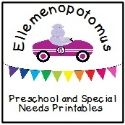I was turned on to this book through a recommendation made by a veteran homeschooler. All FIVE of her kids had learned to read with this program. Since I didn't have any idea what else to go with at the time, I went with this curriculum. Little Bean and I struggled through several weeks of lessons before I finally realized that he just wasn't ready to learn to read. We packed the book away for a while, and then, when I was ready to begin him on formal K work, I pulled it out again, and we started over from the beginning.
 100 Lessons uses the Distar reading system and is primarily phonics based. The system uses special characters that represent every sound the child needs to learn to read, thus sight words are eliminated (pretty much). There are a few that I feel are so farfetched that I just teach them as sight words, but the point of the book is to limit sight words to the bare minimum. The pronunciation guide below is located at the front of the book, and shows the symbols used for each sound and their pronunciation. This is a chart primarily for the parent to familiarize herself with the symbols and sounds.
100 Lessons uses the Distar reading system and is primarily phonics based. The system uses special characters that represent every sound the child needs to learn to read, thus sight words are eliminated (pretty much). There are a few that I feel are so farfetched that I just teach them as sight words, but the point of the book is to limit sight words to the bare minimum. The pronunciation guide below is located at the front of the book, and shows the symbols used for each sound and their pronunciation. This is a chart primarily for the parent to familiarize herself with the symbols and sounds.As you can see, many of the symbols are just like regular letters. But for letters that have more than one sound(the vowels for instance), or for sounds that have more than one letter (ar, th, ch, sh, etc), the book uses special symbols so that the child doesn't get confused about which sound to use when reading. As the book progresses, the child is gently weaned off of the symbols. Little Bean is experiencing some of that weaning right now (we are on Lesson 58), though he doesn't even realize it. The book doesn't wean the child off of a special symbol until it's been read so many times that the child can read the word without decoding much. The book also uses symbols to represent breaks in words and voiced and unvoiced sounds.
 Here's a page in a recent lesson. Each lesson follows the same format--reviewing old and sometimes a new sound, reviewing old words, and sometimes a few new words, sounds again, and then finally a story. After the child reads the story once, they get to see a corresponding picture, and are asked simple questions about the picture and about what happened in the story. I usually have Little Bean read the story twice, just because I want to make sure he really knows the words before moving on to a new and harder lesson the next day. The final part of the lesson is a short writing exercise. Little Bean has other curriculum for writing, so I don't use this portion of the book. Each lesson takes us about 10 to 15 minutes, depending on if Little Bean is dawdling or not. Usually he complains some, but we don't have meltdowns like we used to have. I'll be honest, I don't love this curriculum because Little Bean doesn't love it. BUT, I can see that it IS working. He is reading now, and being that we are so far into it, I'm sticking with it. He may not love his reading lessons, but he will love the end result--the ability to read! Something mysterious about the special characters--Little Bean has a really hard time with differentiating between d, b and p in other reading materials, but because of the font in this book, he never confuses them! In the pic below, you can see an example of the b (just regular), and a d in duck below--notice it's a bit of a unique font.
Here's a page in a recent lesson. Each lesson follows the same format--reviewing old and sometimes a new sound, reviewing old words, and sometimes a few new words, sounds again, and then finally a story. After the child reads the story once, they get to see a corresponding picture, and are asked simple questions about the picture and about what happened in the story. I usually have Little Bean read the story twice, just because I want to make sure he really knows the words before moving on to a new and harder lesson the next day. The final part of the lesson is a short writing exercise. Little Bean has other curriculum for writing, so I don't use this portion of the book. Each lesson takes us about 10 to 15 minutes, depending on if Little Bean is dawdling or not. Usually he complains some, but we don't have meltdowns like we used to have. I'll be honest, I don't love this curriculum because Little Bean doesn't love it. BUT, I can see that it IS working. He is reading now, and being that we are so far into it, I'm sticking with it. He may not love his reading lessons, but he will love the end result--the ability to read! Something mysterious about the special characters--Little Bean has a really hard time with differentiating between d, b and p in other reading materials, but because of the font in this book, he never confuses them! In the pic below, you can see an example of the b (just regular), and a d in duck below--notice it's a bit of a unique font. Here is a sample of what Little Bean read today in his lesson. Since you probably can't see it in the picture, I'll type it out for you. You'll notice that there are no capital letters. The book hasn't introduced them yet.
Here is a sample of what Little Bean read today in his lesson. Since you probably can't see it in the picture, I'll type it out for you. You'll notice that there are no capital letters. The book hasn't introduced them yet.a girl and a man
a girl was on the road to a farm. she met a man. she said to the man, "go with me to the farm, then we will pet a pig."
the man said, "I pet ducks and I pet chicks. I do not pet pigs."
the girl said, "it is fun to pet pigs. pigs are fat."
the man said, "I will not pet them. I will go to the park and pet a duck."
so the man went to the park and pet a duck. then the girl went to the farm and pet a pig.
the man said, "I will not pet them. I will go to the park and pet a duck."
so the man went to the park and pet a duck. then the girl went to the farm and pet a pig.






















4 comments:
I'm glad to hear that you are having success with the book/program. We borrowed it from our local library to try to use it with our daughter, but it just wasn't for us. However since trying to use the book I've learn that my daughter has convergence insufficiency. I have a feeling now that convergence insufficiency is the reason that many of these things have not worked for us. I need to find something that would work for us :)
I will check this book out the next time I am at the library. Our children are learning to read using both phonics and sight words. We play Erudition to expose them to sight words and it has worked wonderfully for us.
I have taught all three of mine to read with this book, I still have one in it. We love it! My kids are great readers because of this book.
Angela
Informative stuff. Actually, I'm also a student and find out the solved or answers to my syllabus questions & landed here. Now I will make an important statement about the most valuable quality of lineserved.com books that : this deep understanding is not devoid of an emotional dimension. Its a fact you have also shared an enjoyable and informative piece of content here. Anyways, thanks for sharing the nice piece of stuff with us.
Post a Comment